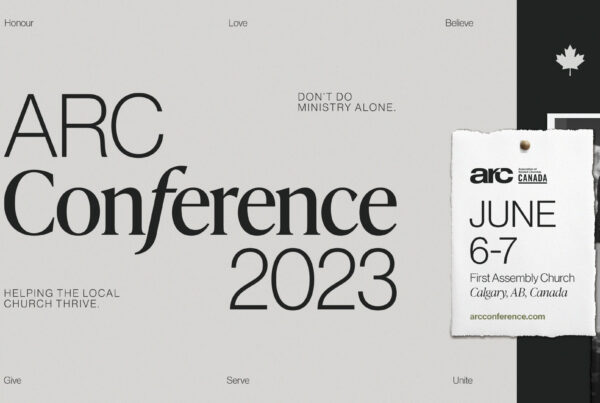
How do we break the barriers of our attendance? Whether you’re at 200, or 100, or 400, how do you break that barrier? Here are some universal truths.
The longer your church has settled at a number, the longer it will take to break through it.
What got you here won’t get you there. What got you to 100 won’t get you to 300. Every church grows to the level of the pastor’s personality until they start adapting systems, structure, and strategy. When you’re 100, 150, or under, you’re ministering to people. If you want to get to 300, 400, 500, 600, 700, 800, you’ve got to minister through people. The bigger you get, the less people you pastor. It’s an odd thing, but the bigger you get, the more you have to get other people to pastor with you. You’re going to have to change some things in order to get wherever you want to go.
Every new level requires a change. Something’s going to have to change. People don’t mind change; it’s the process they don’t like. If you’re not willing to sacrifice for what you want, then what you want becomes the sacrifice. Especially in the church world. If we wanted to see our church go from 4 campuses to 6, it means it required a change. If we wanted to start focusing on helping other churches grow, we had to be willing to leave where we’re at to go to a new level. It always requires a change.
There are six phases of a church. Where do you think your church is at? Why do you think you’re there? How do we get to the right level?
- Launch. Every church has a launch. It doesn’t matter if you’re a year old, one month old, 40 years old…there was a launch day.
- Utopia. It’s when everything is going right in your church; you just don’t know why. But, if you don’t know why it’s going right, you won’t know how to fix it when it’s going wrong. So, you have to know why it’s going right.
- Whirlwind. Every church will end up going through a whirlwind. It looks like this: “We normally run 175. But sometimes we get too 220 or 230. Then we’re back down to 175.” or whatever your number is. It’s a very frustrating place to be because you want to know, “Why can’t we break through this?”
- Increase. Increase is where you want to live. You’re constantly increasing, growing, developing, getting bigger, better, and stronger all the time. It’s an increase stage. It’s an awesome stage to be at.
- Merry Go Round. All you’re doing is going in circles, you’re never making any progress, and your view is always the same. A lot of churches are this way. It’s always moving; you’re just not growing. It’s a lot of movement with very little progress.
- Slow Death. Somewhere between 100 -200 churches die every single Sunday. It’s a crazy thought to think about.
Understand something – you will go through launch, you will go through utopia, you will go through whirlwind. You want to land at increase. You don’t have to go to merry go round, and you don’t have to go to slow death. So, how do we get to increase?
For you to get to increase and to stay at increase, here are six different things you can do.
- Change what you believe is possible. It’s not what you are that holds you back; it’s what you think you’re not. So, you’ve got to change what you believe is possible for you, but you also have to change what you believe is possible for your church.
- Change the way you structure. Two things will help your church explode and continue that increase – structure, and strategy. Structure is your leadership and how you do leadership. Strategy is how you move people from the community of your city, to the crowd on Sunday morning, to the core. The size and speed of your church will always be determined by the structure and the strategy. You can minister to people up until about 150, but you have to minister through people if you want to break that. You’re never going to break that in your ministry if you don’t learn to minister through people. You’ve got to grow as a leader, and you’ve got to get your church team to grow.
- Change how you spend your time. Some of us need to work smarter, and some of us need to work harder.
- Change your approach to be more culture driven. Culture trumps vision every time. Culture is a raging river; it moves constantly. When new people join your church, they’re going to go in the direction of the river. If you don’t have an invite culture, they’re not going to invite. If you don’t have a serving culture, they’re not going to serve. Culture is always changed by three things: the stories you tell, the heroes you make, and the things you celebrate.
- Change to becoming fixated on mission. What is the one thing you want to be about? Your church has got to know – ‘What’s the one thing we do? What’s the one thing we’re after?’ What is written on the wall has to be lived out in the hall.
- Change from agreement to alignment. The church will rarely ever go farther than the leadership. You’ve got to have people on your team who are not just agreeing with you but are in alignment with you. And if they’re not in alignment with you, you need to figure out why and confront the issue in love. Don’t live in artificial harmony.
My goal, my heart, and my desire for you is that you reach the place of increase. That you don’t stay in the whirlwind, or the merry go round, or wherever you find yourself today, but you remain at the level of increase.
—-
Chris and his wife Laura are the founding and lead Pastors of South Hills Church, a multi-state, multi-campus church based in southern California. He is the author of 3 books, his most recent being When Your Church Feels Stuck. In 2016, Chris founded Church BOOM, an online training and coaching platform for pastors who want to grow their church.





